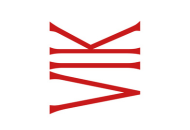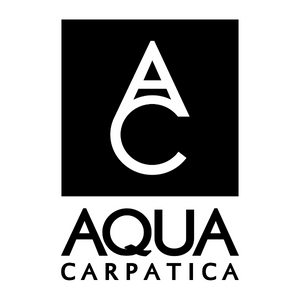He is a great proponent of Romania’s indigenous grape varieties, making varietal and single-vineyard wines from grapes such as Negru de Drăgășani, Novac and Crâmpoșia Selecționată for his employer, Prince Stirbey Winery, and his own brand, Bauer Winery, 1km away.
He came to help Stirbey for a few months but fell in love with the local grapes and then with a Romanian. He has been at Stirbey for 20 years, starting his own side project with his now wife and business partner Raluca in 2012.
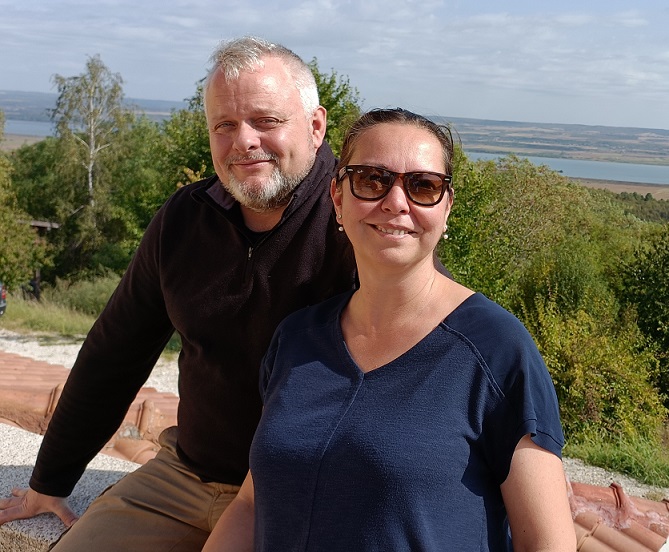
They met at a wine fair in Bucharest while he was promoting the first vintage from the revived Prince Stirbey brand. The Stirbey family, which hailed from Wallachia, has been a significant player in Romanian history since the 15th century. Prince Barbu Stirbey (1799-1869), for example, laid the foundations for an independent state in the 19th century by schmoozing the Ottoman, Austro-Hungarian and Russian empires, as well transforming Tara Romaneasca, as it was called then, from a feudal and agriculture-based country to an enlightened nation, with its first industrial enterprises, a modern educational system and an improved road network.
20ha of the family vineyards, nationalised in 1949, were eventually handed back to Princess Ileana Stirbey and her husband Baron Jakob Kripp in 2001. Jakob met Oliver at a brewery in Bavaria and persuaded him to come to the foothills of the Transylvanian Alps to help rebuild the wine business.
Although many international grape varieties were planted in the region during Nicolae Ceaușescu’s Communist regime, Jakob and Oliver believe the focus should be on local and regional varieties.
Jakob says: “We felt a strong obligation to Ileana´s ancestors, who ended up in prison and suffered so much for the place. But we saw also a huge opportunity in bringing something new to the European wine market: wines of unknown grape varieties from a completely undiscovered wine region, far away from the beaten tracks of wine enthusiasts, who are always curious to discover something new.”
Oliver reasons: “If you are using material that comes from the region or is very well adapted to the region and the conditions, you cannot be wrong. The only question is what kind of quality you reach or what kind of wine you will obtain with this variety. Anytime I’d choose an indigenous or unknown-but-adapted variety over a popular international variety. For example, I can’t see the sense to plant Rhine Riesling here, even though I’m from Germany and would love to have Rhine Riesling around the house. But it would be a crime against humanity.
“We have such a huge portfolio of grapes to choose from.”
Some of the grapes he’s talking about were created down the road, at the viticultural research centre in Drăgășani. These include two reds and a white:
- Novac, a 1987 crossing of Negru Vărtos and Saperavi;
- Negru de Drăgășani, another recent crossing (1993), this time of Negru Vărtos and Băbească Neagră;
- And Crâmpoșia Selecționată, a high-acid, zesty, mineral-laden white, obtained in 1972 from a seedling of Crâmpoșia – solving the inconsistent flowering and uneven ripening problems associated with the potentially high-quality Crâmpoșia.
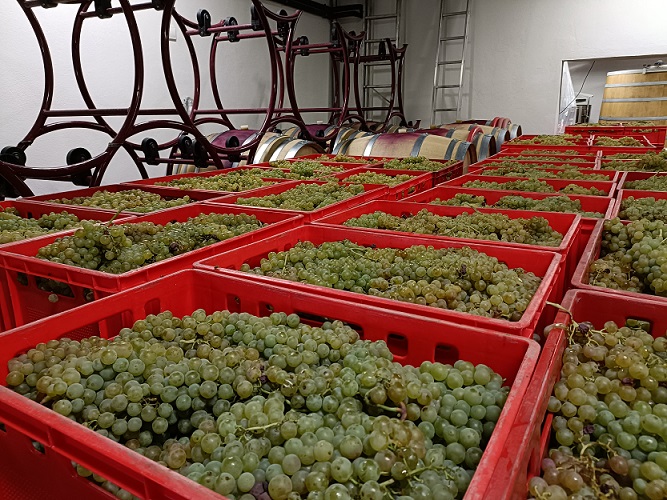
Crates laden with Crâmpoșia Selecționată are stacked near the pneumatic press when I arrive at Stirbey.
I can also see lines of stainless-steel tanks for fermentation and clarification and old oak barrels of different volumes for maturing red wines. Regarding ageing in oak, Oliver says: “Anything shorter than 12-14 months is not ageing, it’s aromatisation, especially if you are using new wood.” He prefers old wood and likes to age his reds for 14-18 months, the extra time pushing “the wine to another level”.
But it’s always used oak. He has a very strong view on new wood: “I’m not participating anymore in this rat race of every year new wood.” As well as not wanting powerful oak flavours, a friend who worked in forestry was appalled at the cheap price of oak barrels considering it takes four or five generations to grow an oak tree to a suitable size and only about 30% can be used for staves. “Somebody using an old barrel is not a bad winemaker. Perhaps it’s a winemaker who really thinks about things,” Oliver offers.
'Mr Bauer, what have you done with the wine?'In the winery, they are also racking a grape called Tămâioasă Românească from a fermentation tank. Tămâioasă Românească is a variety that has been in the region for more than 2,000 years but, as far as I can tell, it’s Muscat Blanc à Petits Grains. The difference here is that Oliver vinifies it dry.
He always has, even when the market was telling him it had “to be semi-sweet or semi-dry at least. For me, this was something new and I think this was also my advantage coming from Germany where there’s Muskateller and Traminer. In Austria it’s normal that you have also a dry version because those are genius varieties for dry wines. Only here, the people asked me: ‘Mr Bauer, what have you done with the wine because it’s dry?’ The first time I was asked this question, I didn’t even understand what this person wanted from me. It’s a dry wine, what could I have possibly done to the wine? But they thought that there are sweet varieties and dry varieties.
“After two years, people were more accepting (of) it and now you will not find a winery with Muscat Ottonel, Traminer or Tămâioasă not having at least one dry version. Now a dry Tămâioasă is the pride of many wineries. It’s so nice, it’s our Romanian variety. And it’s a dry version that can stand up to any dry Muskateller or Traminer.”
As the Tămâioasă fermentation has finished, I ask how it started. This elicits another strong opinion, this time aimed at faulty wines produced “naturally”.
‘I’m not doing wine by good luck’“Personally, I have nothing against any kind of an oenological product as long as it’s legal,” Oliver says, warming to the subject. “We stopped talking about wine and we’re losing ourselves into extremes just to be different, just to appear to be special. And for me the best example is this natural wine, orange wine movement. I love orange wine. I love the concept. I’m making orange wine (in tank using Sauvignonasse grapes with four months of skin contact). But I don’t know that we have to do it like 6,000 years ago. If I have a good material, neutral, let’s say controllable material (like inox), why I have to use flowerpots to make my wines? And if using a flowerpot, use it at least decently and in the way the professionals, the Georgians, are using it. Use it like a qvevri, don’t show it like a piece of design art in your cellar, dig it in, then you may tell me you are using an amphora because this is the way to do it. Okay, we can still discuss other technical problems, but at least then I’m respecting your idea. But to tell me because it’s round, the wine comes better, I hate that. And of course, if I have trouble fermenting, I’m using selective yeast because then I’m sure what’s happening. I’m not doing wine by good luck.
“Natural wine for me is a really bad vinegar. And not even this is natural. Because you have to take care that some grapes will be there to be picked. For me, wine is nothing natural. For me, wine is something cultural. What I’m doing here is what my ancestors, my grandparents, my parents, everybody that did wine does. And with growing knowledge we’re doing it better and better, more and more precise.
“I’m saying less intervention, yes. That means I’m trying not to have a flaw or defect in my wine or faulty process in my winemaking, so I’m not obliged to intervene. Of course, I have to intervene, I have to select, I have to destem, I have to crush, I have to press, I have to decant and clarify the wines. All of this is not natural.
“Wines like this Crâmpoșia, if you’re pressing it now we’re getting output of 30% after perhaps two or three hours. The rest is going to go away. If I use an enzyme or if I use time, like I do, it’s the same effect and we get more. But if you don’t have the time, then I’ll use some enzymes to help me to do that. This is professionalism.
“I’m not bending this wine towards something it’s not. But if the wine needs my attention, I give it.”
Every year he makes one wine with very low intervention but, he is adamant: “I’m not a natural winemaker. I will not refuse to use something which is proven to be a good idea just to be different. If it comes to material, if I have to choose one material, it’s stainless steel because, I’m sure, if the Georgians or Persians or Egyptians had stainless steel 6,000 years ago, not one guy would have used amphora.”
To winemakers who are not using the latest technology because they want to be different, he likens this approach to going for surgery and refusing anaesthetic in favour of “somebody with a hammer”.
Turbid wines are also a no-no in his book. “I can see that it’s not filtered. This to me is a fault. It’s not art. You have a turbid wine,” he points out.
He continues: “I don’t know about you, but I don’t want to drink wine like 6,000 years ago. I don’t even want to think of it like 40 years ago. How many of these wines are still alive? In Germany, the wine in the 1970s and beginning of the 1980s was a disaster. Now, German wines are really, really good. But it’s just knowledge and technique.
“I love the idea of the combination of tradition and, let’s say, ancient knowledge with modern technology, then we are going really some ways to exclude all mistakes and all the faults and shortcomings.”
'Don’t rush'He uses cultured yeasts, bentonite, and sulphur. But his main winemaking principle is: “Not rushing the wine. Now we are starting to rack from the full yeast after fermentation. And the wines will remain on fine lees for at least half a year plus.”
For some of his wines it’s 27 months on fine lees in old barrels.
“It’s something that gives to wine structure, balance and the potential to age.”
He believes clarifying them too quickly by filtration “takes out their backbones”. He says the wines can be “very impressive in the beginning” with their fresh fruit flavours and aromas but “they go down like a rose with no water. So, I prefer not to have this right-in-your-face super-duper fruit. I would like to have more complex bouquet and aroma, but most of all I would like to give my wines the best ageing potential.”
Native varieties
On the terrace, overlooking vineyards on Olt hill, leading to the Olt River, I can see Merlot vines at the top of the slope and Sauvignon Blanc on terraces at the bottom.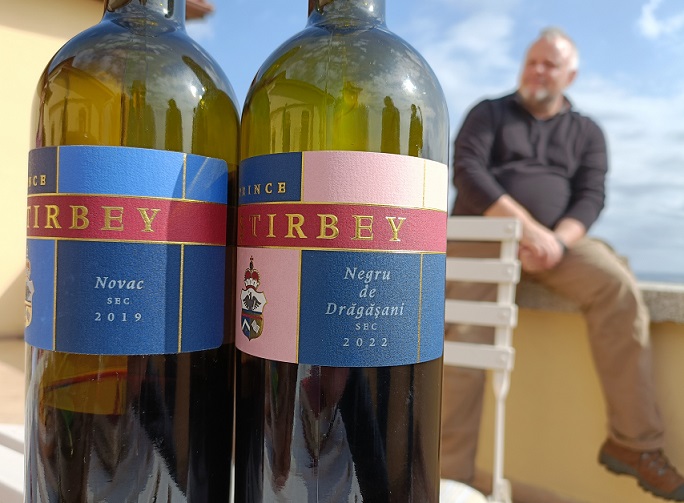
Stirbey also grows Cabernet Sauvignon. “I’m not against international varieties as long as they are planted where they belong and as long as they are not trying to copy a very popular, famous idol. I never understood the concept of making a Bordeaux-like blend in a poor country which is almost as good or even better than the original, only cheaper. I don’t get that concept,” Oliver says.
“I want to make a Romanian wine. I love Bordeaux, I love Rhine Riesling and I love Pinot Noir from Burgundy. But I will never really enjoy a Bordeaux blend from South Africa. I prefer their Pinotage because this is something I won’t get somewhere else.”
When Stirbey restarted in 2003, with Oliver in charge of the winemaking, he was clear about the task ahead: “We had to make a stand – single varieties, single vineyards. It took a while, but now, I have to say, people are getting the idea more and more, especially people who know something about wine and are drinking different wines and have experience of the international wines. At a fair, I was never asked for a wine like a Bordeaux or a German Riesling, I was always asked what is special here, what are you doing?
“I would like to have an authentic, typical wine made out of a grape which is growing well in this particular region.”
Raluca pours the Novac. It’s a tricky grape but Oliver persists with it because it can produce fresh, lively red wines. And it’s local.
“It’s a really difficult variety to grow because it’s very vigorous,” he explains. “You can easily harvest 20 tonnes a hectare if you have the soil and the rootstock for it. And it requires a lot of patience in the cellar because there’s nothing you can do right away. It’s, for me, the Pinot Noir substitute for warm climate regions… It doesn’t like too much rain because the skin is very, very thin and the berries are very, very big. But if you respect the variety as it is – I’m treating it like a Pinot Noir – with time it will give you genius results. Very, very particular character but nice acidity, very silky tannins and very good ageing potential. Ten to 15 years plus is not a problem. Nobody will ever keep it this long, but it comes from the downside that it’s not approachable to taste from the start – it takes at least two or three years to settle in bottle just to be approachable. Or extensive aeration.
“You will not sell millions of hectolitres a year, for sure, but this is something that can stand out from the crowds, that can be mentioned as a typical representative of Romanian wine. I’m pretty sure about that because I hardly know red varieties with this versatility like Novac. You can make a really good and profound and complex red wine with latent potential and we can make a genius crunchy rosé out of it.”
He is also using it for a sparkling wine.
He adds: “There’s not a bad variety or lesser variety, it always depends very much who plants it where and who vinifies it, and what you expect from each variety. As long as you’re not trying to make a Burgundy Chardonnay out of a Swiss Chasselas.”

Raluca pours the Negru de Drăgășani, while Oliver (above) continues to hold court. This is another native grape they believe in. It produces soft, fruity reds with flavours of blueberries, sour cherries, blackberries and aromas of spices.
“This may become a really good wine,” Oliver says. “For me, Negru de Drăgășani is way easier to approach, like everybody’s darling. This version is the more simple, normal, fruit-driven version, with only some months in big wood to settle it a little bit, but the target was always the fruit driven, the freshness of the wine.”
At Stirbey, the vineyards have been increased to 25ha and annual production is now around 70,000-80,000L.
Bauer Winery
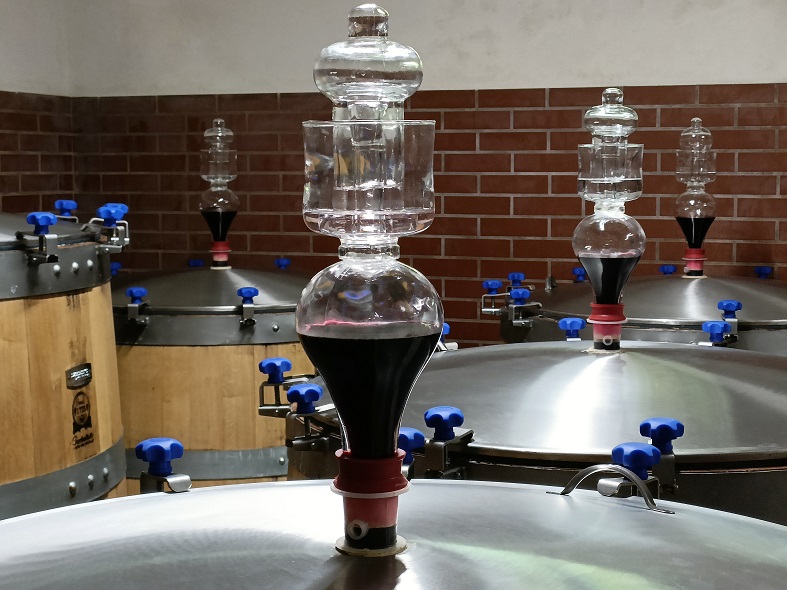
We go along the road to Oliver’s family project Bauer Winery, which produces about 35,000 bottles of “niche” wines a year. About a third, he admits, are made “for the love of the wine, not to earn money.
“If you want to earn money, produce something very fruity, easy to drink, if possible a little sweetish, then it sells.”
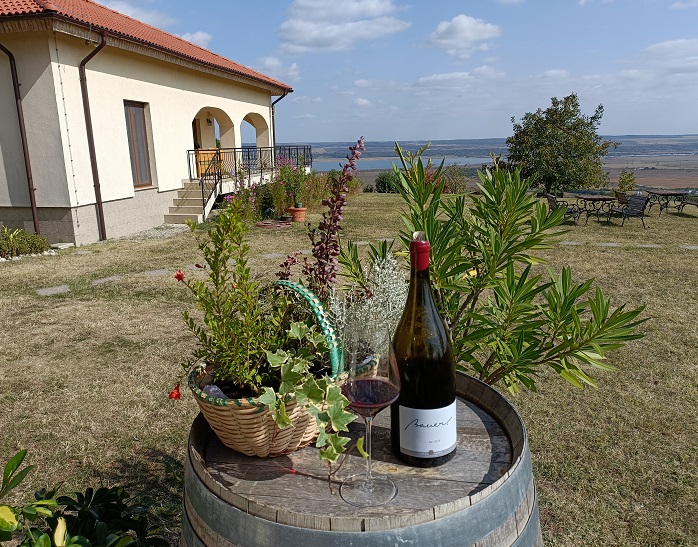
Oliver’s business plan is to grow unusual grapes such as Crâmpoșia Selecționată, Fetească Regală, and Negru de Drăgășani, vinify them to maintain this unusual character and then “try to find people who agree with that”.
While sitting outside his winery and tasting his wines with sushi, the conversation veers into another topic close to his heart – reflecting the vintage. Not surprisingly, Oliver has strong opinions on this topic, too.
“If this is not tastable or not feelable in the wine, then I did a bad job,” he says. He has full respect for winemakers who are “doing almost the same wine every year; this is really, really a tough job to do.” And he acknowledges that many consumers don’t care about the vintage or the winemaker’s philosophy – “they want to have a nice label, good price and, if possible, a bottle for free or a set of glasses and that’s it.”
But that’s not his market. He thinks you should be able to taste if the wine comes from a warm or cool year in a vertical tasting. “You can do this and finally you’re getting involved. Finally, you’re getting a personal relationship with the product. A bad year is not a bad year, it’s different, it’s something else,” he elaborates.
'I'm a wine guide not a winemaker'Which leads us back to his winemaking philosophy. “I’m a huge fan of less intervention,” he admits. “I consider myself being rather a wine guide not a winemaker. For me, winemaking is more winegrowing. I have to be there when the vines are planted in the best-case scenario, then I have to be there when the vines are pruned, then I have to be there when they’re harvested and I have to decide what to do or what not to do. I have to see every grape before it’s crushed. Nobody else does that. Because this is my pleasure. Because I want to, I want to see what’s entering the tank and then I can adapt my interventions and keep them to the absolute necessary minimum.
“I’d like to sit in the cellar with a glass of wine and be forced to do nothing. It’s not the case, but it’s the idea. And then if the wines are developing in an undesired way, then you have to push them a little bit in the right direction.”
During his discussion he takes the time to pay tribute to his workers, who are out in the vineyards in all weathers. If it wasn’t for them, he says, we’d be sitting here talking “about the mineral water I bought from Lidl or somewhere else, but about wine we won’t talk because I would not have any”.
Climate change
As it’s been a challenging vintage, we naturally move on to the hot topic of climate change. Oliver believes “the vine itself is such an amazing plant and if you treat it right, it can survive and adapt very, very well. The problem is that we always think that we can bend and model it to our sake.” He believes the right canopy management (leaving more leaves) and less green harvesting will help. But, he believes, drought will become a major problem. He would like to plant indigenous grape varieties on drought-resistant and less vigorous rootstocks, but he says, “you can hardly find them”.In challenging years, he believes his older vines offer more consistency and better balance, even if the alcohol is higher.
He tells me: “For me, alcohol is the muscle and acidity is the bone and if you have only a pile of muscle, it’s nothing – in the beginning, it’s impressive. But for somebody who is used to drinking wine, it’s simply too fat, it’s too tiring to drink it and therefore I need – this is the challenge here – I need bone, I need structure, I need something to chew on, then you can also have wine to 15% (abv).”
He thinks the days of making red wines with 12-13.5% abv are gone. “If I have 13.5-14 degrees alcohol, I’m very happy (now). We are hunting here the acidity and I want fully ripened – uniform ripeness – not overripe but also not underripe. This is the challenging thing especially in years like this one.”
But, in many ways, he prefers challenging years. “If, despite all odds, you’re still able to obtain a nice final product, this is even more satisfying than in a very easy, very good year to make wine because it’s a piece of cake to make something good but now to wrestle with nature… this is quite satisfying. This is what makes this job, this profession, so desirable, at least for me.”

 English
English French
French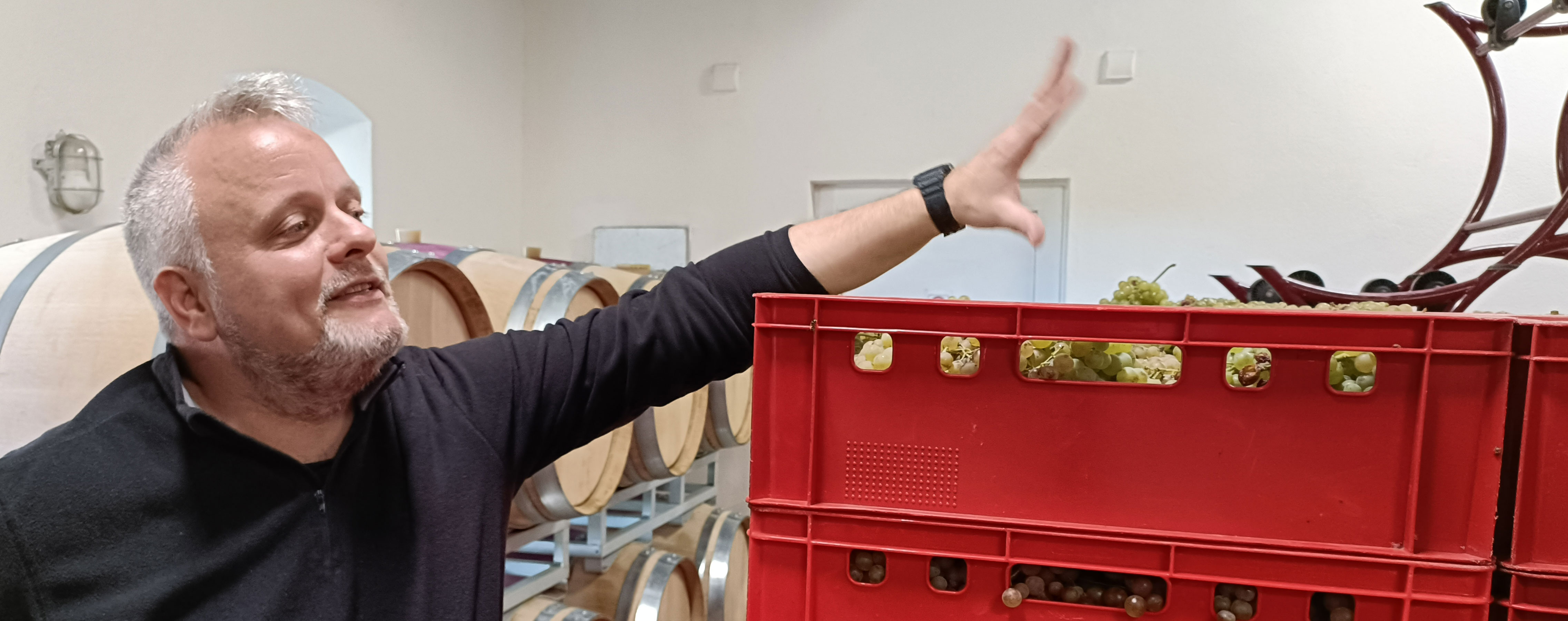


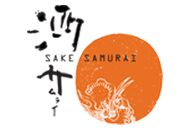
.png)
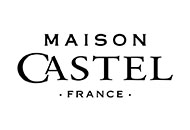

.png)

